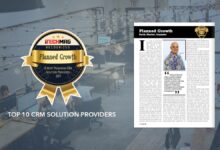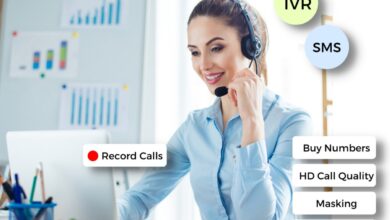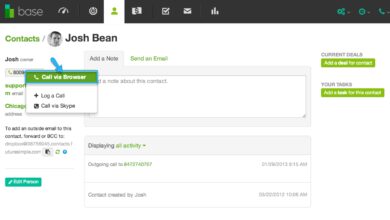PLG Based CRM: 7 Powerful Benefits You Can’t Ignore
Ever wondered how some companies effortlessly grow their user base while keeping customers happy? The secret might lie in a PLG based CRM—where customer success drives sales, not the other way around.
What Is a PLG Based CRM?

A PLG based CRM—short for Product-Led Growth CRM—is a customer relationship management system designed to align sales, marketing, and support around the product experience. Unlike traditional CRMs that prioritize sales teams and lead pipelines, a PLG based CRM puts the product at the center of the customer journey. It tracks user behavior, engagement, and product usage to drive conversions, retention, and expansion.
Defining Product-Led Growth (PLG)
Product-led growth is a go-to-market strategy where the product itself is the primary driver of customer acquisition, conversion, and expansion. Instead of relying heavily on sales reps or ads, companies let users experience the product early—often through freemium models or free trials—and guide them toward value discovery.
- Users sign up and onboard themselves
- Value is delivered quickly through intuitive UX
- Expansion happens organically via in-product upgrades
This model has powered the rise of companies like Slack, Notion, and Zoom. According to ProductLed, businesses embracing PLG grow 2–3x faster than traditional models.
How CRM Fits Into the PLG Model
Traditionally, CRM systems like Salesforce or HubSpot are sales-led—they track leads, manage pipelines, and support outbound outreach. But in a PLG based CRM, the focus shifts from managing sales reps to understanding user behavior.
The CRM integrates with product analytics tools (like Mixpanel or Amplitude) to capture real-time data on feature usage, login frequency, and engagement patterns. This allows teams to identify high-intent users, trigger personalized in-app messages, and automate nurturing workflows without human intervention.
“In a PLG model, the product is the salesperson. The CRM’s job is to make sure no high-potential user slips through the cracks.” — Wes Bush, Author of Product-Led Growth
Why PLG Based CRM Is a Game-Changer
The shift from sales-led to product-led strategies isn’t just a trend—it’s a fundamental rethinking of how software creates value. A PLG based CRM enables this shift by aligning every customer touchpoint with actual product usage.
Accelerated Customer Onboarding
One of the biggest challenges in SaaS is getting users to their “aha moment”—the point where they realize the product’s value. A PLG based CRM tracks onboarding progress and triggers contextual nudges when users stall.
- Sends tooltips when a user opens a feature for the first time
- Triggers email sequences if a user hasn’t completed setup in 48 hours
- Alerts customer success if a high-value account shows low engagement
This proactive approach reduces time-to-value and increases activation rates. Companies using PLG based CRMs report up to 40% faster onboarding completion.
Hyper-Personalized User Journeys
Generic email blasts don’t work in a product-led world. Users expect relevance. A PLG based CRM segments users based on behavior, not just demographics.
For example, a user who frequently uses reporting tools but never explores collaboration features might receive a tutorial on team workspaces. Another user who logs in daily but hasn’t upgraded might get a targeted offer for a premium plan.
By syncing with tools like Intercom or Customer.io, the CRM delivers personalized messages across email, in-app modals, and push notifications.
“Personalization isn’t a nice-to-have in PLG—it’s the engine of growth.”
Key Features of a PLG Based CRM
Not all CRMs are built for product-led growth. A true PLG based CRM must have specific capabilities that support self-serve models, usage-based insights, and automated engagement.
Behavioral Tracking and User Scoring
At the heart of a PLG based CRM is behavioral data. It tracks actions like feature usage, session duration, and workflow completion to assign engagement scores.
- High score: Frequent logins, multiple feature usage, invites team members
- Medium score: Regular use but limited feature exploration
- Low score: Infrequent logins, incomplete onboarding
These scores power segmentation and trigger automated workflows. For instance, users with high scores might be flagged for upsell opportunities, while low-score users enter re-engagement campaigns.
Integration with Product Analytics
A PLG based CRM doesn’t work in isolation. It must integrate seamlessly with product analytics platforms to pull real-time usage data.
Tools like Mixpanel, Amplitude, and Pendo feed behavioral insights into the CRM, enabling teams to act on data-driven signals.
For example, if analytics show that users who create three dashboards in the first week have a 70% higher retention rate, the CRM can identify users approaching that milestone and encourage them to complete it.
Automated Playbooks and Workflows
Manual follow-ups don’t scale in a PLG model. A PLG based CRM uses automated playbooks to guide users based on their behavior.
- Onboarding playbook: Sends a series of tips during the first 7 days
- Expansion playbook: Targets power users with premium feature demos
- Churn prevention playbook: Engages inactive users with reactivation offers
These playbooks reduce dependency on human teams and ensure consistent user experiences at scale.
PLG Based CRM vs Traditional CRM: Key Differences
Understanding the contrast between PLG based CRM and traditional CRM is crucial for companies transitioning to a product-led model.
Focus: Product Usage vs Sales Pipeline
Traditional CRM systems are built around the sales funnel—tracking leads from prospect to close. The primary metrics are deal size, sales cycle length, and conversion rates.
In contrast, a PLG based CRM focuses on product usage as the leading indicator of revenue potential. Metrics like daily active users (DAU), feature adoption rate, and time-to-value are prioritized.
This shift means that customer success and product teams become as important as sales in driving growth.
User Ownership: Cross-Functional vs Sales-Centric
In a traditional CRM, the sales team owns the customer relationship. Communication is often one-way: sales rep to prospect.
In a PLG based CRM, ownership is shared across product, marketing, support, and success teams. The CRM acts as a shared source of truth, where every team can see user behavior and contribute to the journey.
For example, a support agent can see that a user recently upgraded but hasn’t used the new features—prompting a proactive check-in.
Engagement Model: Outbound vs In-Product
Traditional CRMs support outbound strategies: cold calls, email campaigns, LinkedIn outreach. Engagement happens outside the product.
A PLG based CRM emphasizes in-product engagement. Messages appear inside the app, triggered by user actions. This context-aware communication feels less intrusive and more helpful.
For instance, when a user clicks on a premium feature, the CRM can trigger a modal explaining the benefits and offering a free trial upgrade.
“The best sales pitch happens inside the product, not over the phone.”
Top Use Cases for PLG Based CRM
PLG based CRM isn’t just for startups. Enterprises and mid-market companies are adopting it to improve efficiency and scalability.
SaaS Companies with Freemium Models
For SaaS companies offering free tiers (e.g., Canva, Dropbox), converting free users to paid is a constant challenge. A PLG based CRM identifies high-intent free users—those who hit usage limits or frequently access premium features—and targets them with personalized upgrade paths.
Automated workflows can offer limited-time discounts or highlight ROI calculators based on actual usage.
Self-Serve Startups Scaling Rapidly
Startups with limited sales teams rely on their product to do the selling. A PLG based CRM helps them scale without hiring large sales forces.
By automating onboarding, identifying expansion signals, and preventing churn, these companies maintain high growth rates with lean teams. Notion and Figma are prime examples of this model.
Enterprises Transitioning to Hybrid Models
Even large enterprises are adopting PLG strategies for specific products. A PLG based CRM allows them to run hybrid models—where some customers self-serve while others get white-glove treatment.
For example, a company might use a PLG based CRM to manage small and mid-market accounts, while reserving sales reps for enterprise deals. This optimizes resource allocation and improves ROI.
How to Implement a PLG Based CRM
Adopting a PLG based CRM isn’t just about buying new software—it’s a strategic shift that requires alignment across teams.
Assess Your Current Tech Stack
Start by auditing your existing tools. Do you have product analytics? Can your CRM integrate with your app’s event tracking? Are your marketing automation and support tools connected?
Common integration points include:
- Segment or RudderStack for data collection
- Amplitude or Mixpanel for behavioral insights
- Intercom or Help Scout for in-app messaging
- Zapier or Workato for workflow automation
If gaps exist, prioritize tools that support real-time data sync and event-based triggers.
Define Key User Behaviors and Milestones
Identify the actions that indicate user success. These are your “north star” metrics.
- For a project management tool: creating first project, inviting teammates, assigning tasks
- For a design tool: uploading assets, sharing prototypes, exporting files
- For a CRM: logging first contact, creating a pipeline, sending emails
Map these behaviors in your PLG based CRM and set up alerts or workflows when users hit or miss them.
Align Teams Around Product-Led Goals
PLG only works if teams are aligned. Sales can’t push demos on users who aren’t ready. Support can’t ignore usage data when helping customers.
Hold cross-functional workshops to define shared KPIs, such as:
- Time-to-first-value (TTFV)
- Feature adoption rate
- Expansion revenue from existing users
Use the PLG based CRM as a shared dashboard to track progress.
Challenges and Pitfalls of PLG Based CRM
While powerful, a PLG based CRM isn’t a magic bullet. Companies often face hurdles during implementation.
Data Silos and Integration Complexity
Many organizations have fragmented data—product usage in Amplitude, support tickets in Zendesk, emails in HubSpot. Connecting these systems to a PLG based CRM requires robust APIs and data governance.
Without clean, unified data, the CRM can’t deliver accurate insights. Invest in a Customer Data Platform (CDP) like Segment to centralize information.
Over-Automation and User Fatigue
Too many in-app messages or emails can annoy users. A PLG based CRM must balance automation with user experience.
Use frequency capping, message relevance scoring, and opt-out options to avoid spamming. Test messaging strategies with small user segments before rolling out broadly.
Misalignment Between Teams
If sales teams are still measured on cold outreach while the product team focuses on self-serve growth, conflict arises. Leadership must redefine incentives and KPIs to support the PLG model.
For example, reward sales reps for expanding existing accounts (upsells) rather than only acquiring new logos.
Future Trends in PLG Based CRM
The evolution of PLG based CRM is accelerating, driven by AI, automation, and changing customer expectations.
AI-Powered Predictive Engagement
Future PLG based CRMs will use AI to predict which users are likely to convert, churn, or expand—before they take action.
Machine learning models will analyze historical behavior to recommend the best next step: send an email, trigger a chatbot, or assign a success manager.
Companies like Gong and Chili Piper are already integrating AI into their PLG workflows.
Embedded CRM Experiences
Instead of separate CRM dashboards, we’ll see CRM capabilities embedded directly into the product.
For example, a team admin might see a “growth insights” tab showing which teammates aren’t using key features—and get one-click options to send reminders or training links.
This blurs the line between product and CRM, creating a seamless experience.
Usage-Based Pricing Integration
As more companies adopt usage-based pricing (e.g., pay per API call, per GB stored), the PLG based CRM will track consumption in real time.
When a user approaches their limit, the CRM can trigger a personalized upsell offer with usage forecasts and ROI projections.
This creates a natural, non-pushy path to expansion.
What is a PLG based CRM?
A PLG based CRM is a customer relationship management system designed for product-led growth strategies. It focuses on user behavior and product usage to drive onboarding, retention, and expansion, rather than relying on traditional sales-led tactics.
How does a PLG based CRM differ from a traditional CRM?
Traditional CRMs focus on managing sales pipelines and leads. A PLG based CRM prioritizes product usage data, automates user engagement, and aligns cross-functional teams around the customer journey within the product.
Can small businesses benefit from a PLG based CRM?
Absolutely. Small businesses and startups with limited sales teams can scale efficiently using a PLG based CRM by automating onboarding, identifying high-potential users, and driving conversions through the product experience.
What tools integrate well with a PLG based CRM?
Key integrations include product analytics platforms (Mixpanel, Amplitude), customer communication tools (Intercom, Customer.io), CDPs (Segment), and support systems (Zendesk, Help Scout).
Is a PLG based CRM suitable for enterprise companies?
Yes. Enterprises can use PLG based CRMs for hybrid models—supporting self-serve growth for SMBs while reserving sales resources for enterprise accounts. It improves scalability and customer experience across segments.
Adopting a PLG based CRM is more than a tech upgrade—it’s a strategic shift toward customer-centric growth. By placing the product at the heart of the journey, companies can scale efficiently, improve retention, and unlock new revenue streams. Whether you’re a startup or an enterprise, the future of CRM is product-led.
Further Reading:







